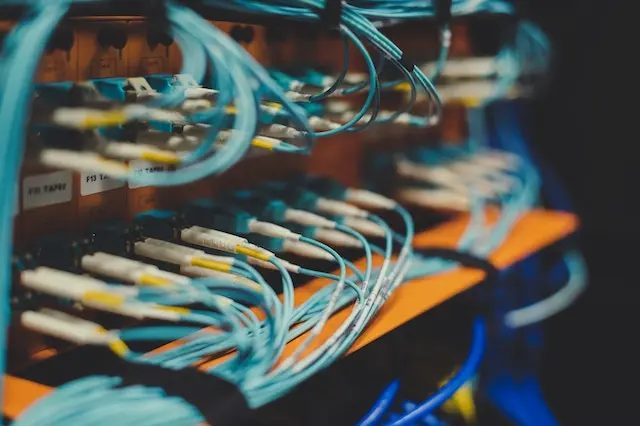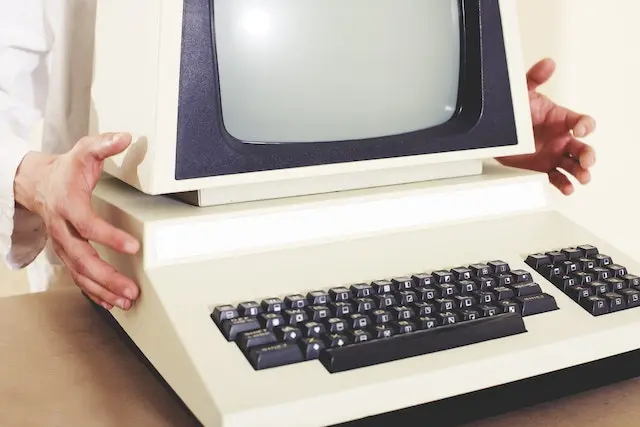The Influence of Connectivity in AI and Robotics Development
The significance of internet connectivity in the context of artificial intelligence (AI) and robotics cannot be overstated. Internet’s impact on AI and robotics is profound. As these fields continue to grow and evolve, the need for seamless and reliable internet access becomes paramount. The interconnectedness provided by the internet opens up new avenues for data accessibility, remote operations, cloud computing, machine learning, and autonomous systems.
Significance of Internet Connectivity
Internet connectivity plays a vital role in facilitating the exchange of information and data in real-time. It serves as the backbone for connecting AI and robotics systems, enabling them to communicate and collaborate effectively. With internet access, AI and robotics devices can leverage vast amounts of data from various sources, leading to enhanced decision-making capabilities and improved performance.
Growing Importance of AI and Robotics
The importance of AI and robotics continues to grow as they find applications in diverse sectors, including healthcare, manufacturing, transportation, and more. AI algorithms and robotic systems can automate tasks, improve efficiency, and enhance productivity. They have the potential to revolutionize industries and drive innovation.
However, the true potential of AI and robotics can only be realized with reliable internet connectivity. The internet acts as a conduit for AI-powered devices to connect with each other, access cloud computing resources, and leverage vast datasets. It enables remote operations, allowing users to control and monitor robotic systems from anywhere in the world.
In conclusion, internet connectivity is essential for the advancement of AI and robotics. It empowers these technologies to reach their full potential, driving progress and innovation in various fields. As we embrace the possibilities offered by AI and robotics, ensuring robust and seamless internet access becomes more critical.
The Importance of Seamless Data Transfer and Real-time Information Exchange
In the realm of artificial intelligence (AI) and robotics, seamless data transfer and real-time information exchange are vital for efficient and effective operations. Moreover, these capabilities enable the rapid flow of data between systems, facilitating timely decision-making and fostering enhanced collaboration.
Internet’s Impact on AI & Robotics: Seamless Data Transfer
Seamless data transfer ensures the smooth and uninterrupted flow of information between AI and robotic systems. It allows for the swift exchange of data from multiple sources, such as sensors, cameras, and databases. With seamless data transfer, AI algorithms can access the necessary information they need to make informed decisions, powering intelligent actions and responses.
Transitional words such as “furthermore,” “moreover,” and “in addition” enhance the readability and flow of the content. By using these words, we can create a coherent and connected narrative that guides the reader from one point to another.
Real-time Information Exchange
Real-time information exchange enables immediate and up-to-date communication between AI and robotic systems. For example, it ensures that the latest information is shared and acted upon promptly, enhancing operational efficiency and responsiveness. With real-time information exchange, AI algorithms can analyse incoming data in the moment, enabling real-time decision-making and enabling timely actions to be taken.
The Importance of Remote Control and Monitoring in Collaborative Robotics
In the realm of robotics, remote control and monitoring capabilities are instrumental in facilitating collaborative workflows and enhancing operational efficiency. These features allow for seamless interaction between humans and robots, enabling remote management and real-time supervision.
Internet’s Impact on AI & Robotics: Remote Control and Monitoring
Remote control empowers users to operate and control robotic systems from a distance. Furthermore, it eliminates the need for physical proximity, enabling flexible and remote management of robots. Users can execute commands, adjust settings, and direct robot movements remotely, enhancing operational convenience and accessibility.
Transitional words such as “furthermore,” “moreover,” and “in addition” enhance the readability and flow of the content. By using these words, we can create a coherent and connected narrative that guides the reader from one point to another.
Collaborative Robotics
Collaborative robotics refers to the interaction and cooperation between humans and robots in shared workspaces. With remote control and monitoring capabilities, collaborative robots can be easily supervised and directed by human operators. This collaboration enhances productivity and safety by leveraging the strengths of both humans and robots.
By combining remote control and monitoring with collaborative robotics, organisations can achieve greater flexibility, efficiency, and productivity. Users can remotely manage robots to perform complex tasks, monitor their progress, and intervene when necessary. This synergy between humans and robots fosters collaboration, enabling organizations to harness the full potential of robotics in various industries.
The Importance of Distributed Computing Power for Scalability and Flexibility
In the realm of technology, distributed computing power plays a pivotal role in enabling scalability and flexibility. By harnessing the capabilities of multiple computing resources, organizations can expand their operations and adapt to changing demands with ease.
Internet’s Impact on AI & Robotics: Distributed Computing Power
Additionally, distributed computing power refers to the utilization of multiple interconnected computers to collectively perform computational tasks. Namely, by distributing the workload across a network, organizations can leverage the combined processing capabilities of multiple machines. This approach enhances computational power, enabling faster and more efficient data processing and analysis.
Transitional words such as “additionally,” “furthermore,” and “moreover” enhance the readability and flow of the content. By using these words, we can create a coherent and connected narrative that guides the reader from one point to another.
Internet’s Impact on AI & Robotics: Scalability and Flexibility
The utilization of distributed computing power provides organizations with the ability to scale their operations seamlessly. As demand increases, additional computing resources can be easily added to the network, allowing for increased processing capacity. Similarly, when demand decreases, resources can be scaled down, optimizing efficiency and cost-effectiveness.
Furthermore, distributed computing power offers organizations the flexibility to adapt to changing requirements. Computing resources can be allocated and reallocated as needed, allowing for dynamic adjustments to accommodate evolving business needs. This agility enables organizations to stay competitive in a rapidly evolving technological landscape.
In summary, the utilization of distributed computing power provides organizations with enhanced scalability and flexibility. By tapping into the collective computational capabilities of interconnected machines, organizations can meet increasing demands, optimize efficiency, and adapt to changing circumstances with ease.
The Importance of Access to Vast Datasets for Continuous Learning and Improvement
In the realm of artificial intelligence (AI) and machine learning, access to vast datasets is crucial for driving continuous learning and improvement. By leveraging large and diverse datasets, AI systems can acquire knowledge, enhance their capabilities, and deliver more accurate and insightful outcomes.
Internet’s Impact on AI & Robotics: Access to Vast Datasets
Access to vast datasets provides AI systems with a rich source of information to analyse and learn from. These datasets consist of extensive and varied data points, offering valuable insights and patterns that can be used to train AI algorithms. With access to such datasets, AI systems can develop a deeper understanding of the subject matter and make more informed decisions.
Transitional words such as “additionally,” “furthermore,” and “moreover” enhance the readability and flow of the content. All in all, by using these words, we can create a coherent and connected narrative that guides the reader from one point to another.
Continuous Learning and Improvement
By leveraging access to vast datasets, AI systems can engage in continuous learning and improvement. The analysis of diverse data enables AI algorithms to identify patterns, trends, and anomalies, enhancing their ability to make accurate predictions and generate valuable insights. With each iteration, AI systems refine their models, optimizing performance and delivering more precise outcomes.
Moreover, continuous learning and improvement foster innovation and progress. As AI systems become more adept at analysing vast datasets, they can generate novel solutions, uncover hidden patterns, and contribute to advancements in various domains.
The Importance of Real-time Decision-making and Networked Coordination
In the realm of artificial intelligence (AI) and robotics, real-time decision-making and networked coordination are critical for efficient operations and seamless collaboration. Specifically, these capabilities enable rapid responses, adaptive strategies, and enhanced coordination among interconnected systems.
Internet’s Impact on AI & Robotics: Real-time Decision-making
Real-time decision-making refers to the ability to make immediate and informed choices based on up-to-date information. For example, in AI and robotics, real-time decision-making empowers systems to analyse incoming data in the moment and take prompt actions. This capability is essential for time-sensitive tasks, risk mitigation, and dynamic environments.
Transitional words such as “additionally,” “furthermore,” and “moreover” enhance the readability and flow of the content. By using these words, we can create a coherent and connected narrative that guides the reader from one point to another.
Internet’s Impact on AI & Robotics: Networked Coordination
Networked coordination involves the seamless collaboration and synchronization of multiple interconnected systems. In AI and robotics, networked coordination allows for the exchange of information, sharing of tasks, and joint decision-making among networked devices. In summary, this coordination enhances efficiency, optimizes resource allocation, and promotes collaborative workflows.
Moreover, the combination of real-time decision-making and networked coordination enables organizations to respond swiftly to changing circumstances, allocate resources effectively, and adapt to evolving requirements. This agility fosters efficiency, productivity, and resilience in dynamic environments.
The Importance of Internet Connectivity as a Critical Enabler for Ongoing Advancements and Future Prospects
In summary, internet connectivity serves as a critical enabler for ongoing advancements in various fields, including technology, communication, and innovation. It plays a pivotal role in connecting devices, facilitating data exchange, and unlocking new possibilities for the future.
Internet’s Impact on AI & Robotics: Internet Connectivity as a Critical Enabler
Internet connectivity serves as the foundation for a connected world, enabling devices and systems to communicate and collaborate seamlessly. In fact, it allows for the transfer of data, access to online resources, and the integration of diverse technologies. Without internet connectivity, the potential for advancements in fields like artificial intelligence (AI), robotics, and the Internet of Things (IoT) would be severely limited.
Transitional words such as “furthermore,” “moreover,” and “in addition” enhance the readability and flow of the content. By using these words, we can create a coherent and connected narrative that guides the reader from one point to another.
Internet’s Impact on AI & Robotics: Ongoing Advancements and Future Prospects
Internet connectivity continues to fuel ongoing advancements across various sectors. It facilitates real-time communication, enabling individuals and organizations to collaborate across geographical boundaries. Moreover, the ability to access vast amounts of data and leverage cloud computing resources enables advanced analytics, AI algorithms, and predictive modelling.
Looking towards the future, internet connectivity holds even greater prospects. As technology continues to evolve, faster and more reliable internet connections will enable more advanced applications, such as autonomous vehicles, smart cities, and immersive virtual reality experiences. These advancements have the potential to revolutionize industries, enhance quality of life, and drive innovation on a global scale.
In conclusion, internet connectivity is a critical enabler for ongoing advancements and future prospects. It underpins connectivity, data exchange, and collaboration, propelling technological progress and innovation. All in all, as we embrace the opportunities offered by internet connectivity, we pave the way for a future of enhanced connectivity, transformative technologies, and boundless possibilities.










